Table of Contents
Brief Introduction
Diagonal composition refers to the line connecting the two diagonal corners of the object in the frame, which is a highly oriented composition form. We can adjust the subject’s body lines to form a dynamic diagonal line in the frame and slant to the opposite corner of the frame. You can also make the background or accompanying lines in the picture form a diagonal form, and arrange the subject on the diagonal. The longest line in the rectangular picture is the diagonal line, which allows us to maximize the use of the space of the picture and make the viewer’s eyes clearly lead to the subject.
The advantage of diagonal composition is that it is dynamic and lively, and it is easy to produce a convergence trend of lines. Has a sense of depth, catches the eye and accentuates the subject.
1. Form a Diagonal composition with Beautiful Oblique Lines
The slashes are varied and dynamic. When expressing static, through vertical or horizontal lines, a serious or tranquil atmosphere can be expressed. When expressing the dynamic of the subject, it is often expressed through curved lines and oblique lines. In commercial shooting, most of the photos are vivid and lively. This requires us to mobilize the body language of the subject to form a dynamic picture.
In a frontal photo, if the head is also upright, the photo looks lacking in variation. So we need to increase the richness and variety of the photo by tilting the head and turning the face when shooting
In the frontal photo of (Fig. 1), we use the model’s head tilted to one side to form the diagonal line of the frame. To make the sloping head look more natural, we can use the beauty of the hands and the echo of the head as support.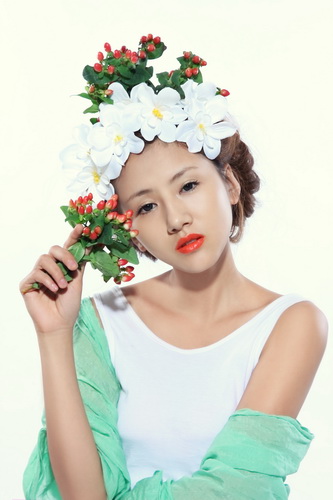
figure 1
(Image 2) In the photo, we form a diagonal line by tilting the head to the upper right corner of the picture, because the head and the lower left corner of the picture are echoed to form a diagonal composition.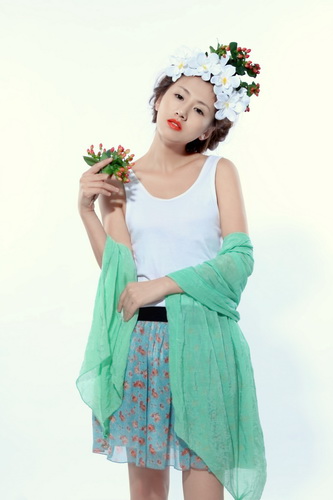
figure 2
In the profile photo (Figure 3), the model’s body is leaned forward towards the legs. So that the head and waist form a diagonal line. The magnitude of the tilt depends on our composition. We can see in the viewfinder that the head is close to the upper left corner of the frame. Until it forms a diagonal line with the lower right part of the composition. When cropping, we often put the face in the center of the picture. So that another diagonal diagonal line is formed by the echo of the face and the hand.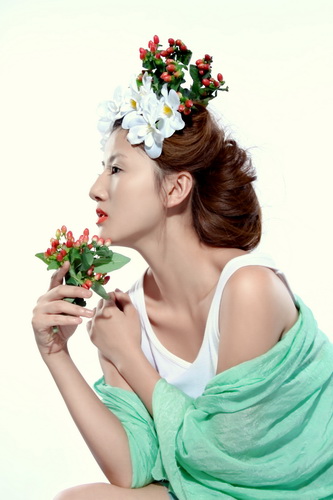
Figure 3
2. Form a Diagonal Composition Through the Echo of Beauty and Background, Props and Space
In the diagonal composition, we not only compose through beautiful lines, but also form a diagonal relationship through the echoes of beauty and other parts of the picture.
In the pictorial photo of (Fig. 4), the main pattern on the background is a large flower. We can deliberately arrange the beauty to be diagonally below the flower to form a diagonal relationship with the pattern. When adjusting, pull the skirt at the same time so that the head of the skirt forms a diagonal corner on the other side. This arrangement can make the picture more static and stable. In commercial shooting, there are many patterns on the background that are not evenly distributed. But we can adjust the position and height of the characters to echo the pattern of the background.
When shooting, we can often use various props and the beauty of the subject to form a diagonal line. For example, tall people and low props will form a diagonal line, or vice versa. You can also use the props in the hands of the subject to form a diagonal line with the main lines of the body. And use various camera positions flexibly.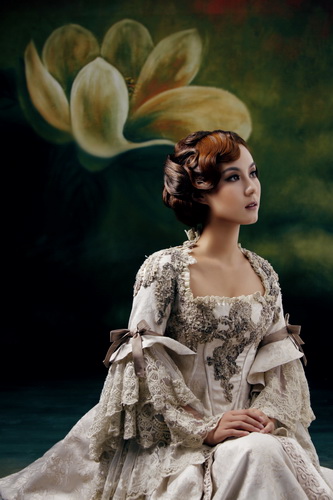
Figure 4
(Figure 5), I used a high camera to shoot overhead. In order to make the composition of the picture more full, I asked the model to put the flower in the corner of the picture. And adjusted the model’s face to turn diagonal lines and the flower together to form the diagonal line of the picture.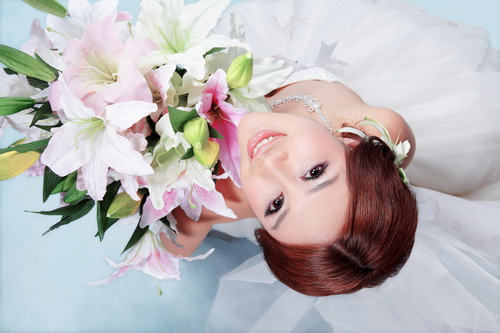
Figure 5
(Picture 6), the shoulders that the model is pulling forward are in the lower right corner of the picture. So it corresponds to the space in the upper left corner. The diagonal line formed by the raised face, we deal with the diagonal line formed by the upper right and lower left corners of the picture. The diagonal composition formed in this way is more natural and attractive.
3. Form a Diagonal Composition by Reversing the Camera Position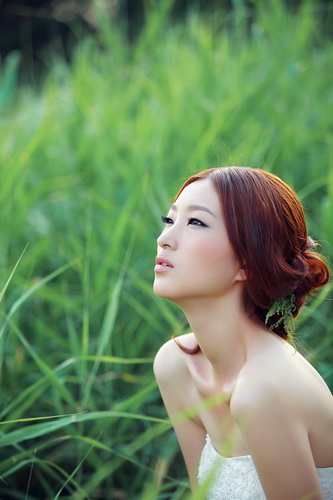
Figure 6
What I mentioned above are all diagonal compositions formed through the adjustment of beauty. In actual shooting, beauty and composition affect each other. We also deliberately adjust the angle of the camera to change the viewing angle.
The inverted position is a special technique in photography composition skills. There are two situations we generally use. One is to deliberately turn some unchangeable inclined lines upside down by rotating the camera during shooting. The other is to rotate the camera so that the subject is on the diagonal line of the picture in order to pursue the movement of the picture or maximize the use of the length of the picture.
In Figure (7), we rotate the camera so that the model’s hands, head, and body are on the diagonal line from the lower left corner to the upper right corner of the frame. In order to make the static beauty more stable, the model’s face is also on the diagonal line formed by the upper left and lower right corners of the picture when composing the picture.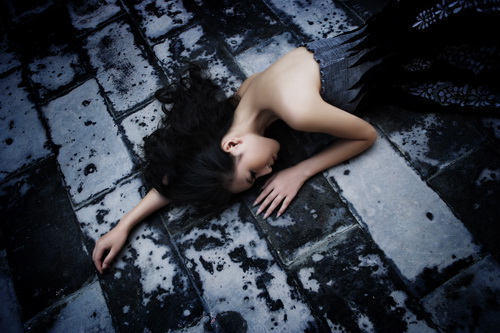
Figure 7
Diagonal composition is the most used composition form, and it is also a composition that is easier to master. I hope that when you practice, you don’t compose pictures for the sake of composition. A bluntly arranged diagonal relationship or in a deliberately inverted position makes the subject look oddly tilted. And it makes the picture unstable.
